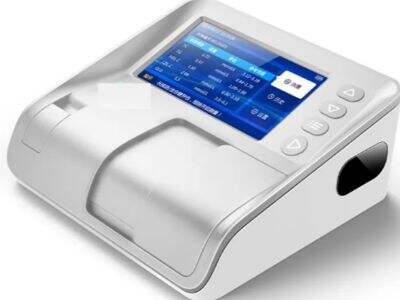Have you ever wondered how scientists know whether liquids like water or juice are acidic or basic? It might sound complicated and overwhelming, but a digital ph meter makes it easy to test the acidic alkaline level of different liquids. By reading this text we will have a clear understanding of how digital pH meter works.
What is pH Measurement?
To get started, before we delve into how a digital pH meter works, we need to talk about what pH is. pH is a measure of the acidity or basicity of an aqueous solution. The scale goes from 0 to 14. A pH level of 7 is neutral, neither acid nor base. Acidic when something has a pH lower than 7. If it has a pH below 7– it’s acidic, if it’s above 7 — it’s basic.
Working Principle of Digital pH Meter
In fact, it is easy and accurate to measure the pH of a liquid using a digital pH meter. It consists of three principal components, a probe, a sensor, and a display screen. The probe is inserted into the solution being assessed. The sensor probes inside the liquid for hydrogen ions. These hydrogen ions tell us whether the liquid is acidic or basic. Using this data, sensor provides the pH level at display screen.
Understanding the Science of pH Measurement
There exists a special science called electrochemistry, which can explain how pH meters operate. Electrochemistry is the study of the connection between electricity and chemical reactions. A digital pH meter has a sensor with electrodes that interact with the hydrogen ions within the liquid. This reaction generates a tiny electrical signal, which is converted into a number that gives the pH level.
How Sensors Measure pH Levels
The sensor of a digital pH meter is highly responsive to variation in hydrogen ion density in the liquid. The hydrogen ions interact with the sensor when the probe is put in a liquid, which triggers a series of reactions that produces an electrical signal. The meter reads and displays this signal on the screen. The accuracy of the reading will depend on the quality of the sensor and how well calibrated it is.
How to Use a Digital pH Meter: Step by Step Guide
Once you know how to do it, using a digital pH meter is easy. Here’s how to use it:
Calibrate the meter – You must calibrate the meter with solutions of known pH before measurement. This ensures that your measurements are precise.
Prepare the sample: Pour a small amount of the liquid you want to test into a clean container.
Dip the probe: Insert the probe into the liquid so that the sensor is below the surface of the liquid all the way.
Wait for reading: Allow the pH meter a moment to stabilize, and check the pH level displayed on the screen.
Clean the probe as follows: After usage rinse the probe in distilled water to have it ready for the next test.
Conclusion
Digital pH meter: Scientists use this to find out how acidic or basic the liquids are. Whether measuring the acidity of an alkaline fluid or scientific test samples, they all share something in common — a widespread pH meter can only measure up to a certain point. So, when you drink juice or look at that water in your fish-tank next time, remember how digital pH meters helps us understand the nature of that acidity and basicity!












































